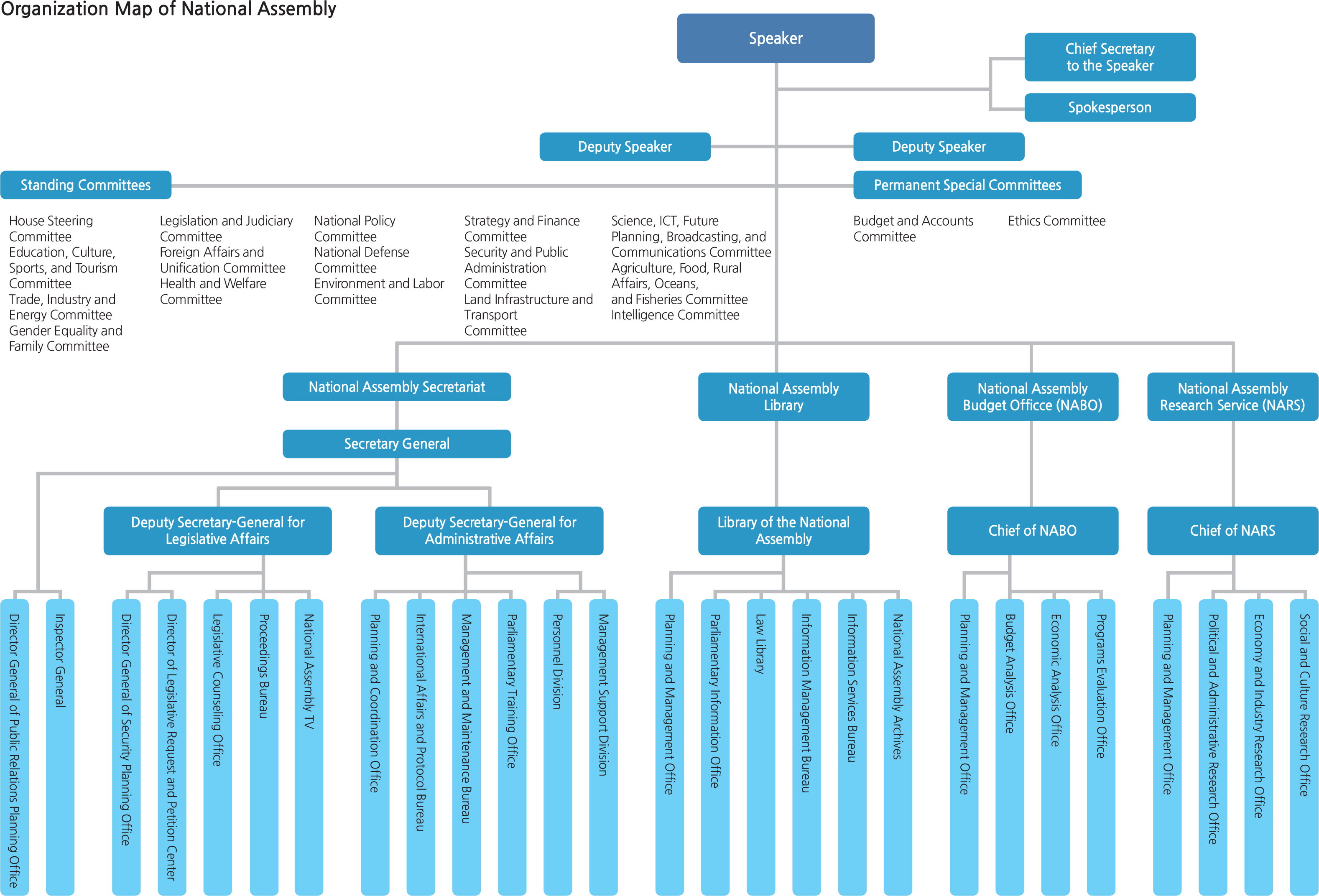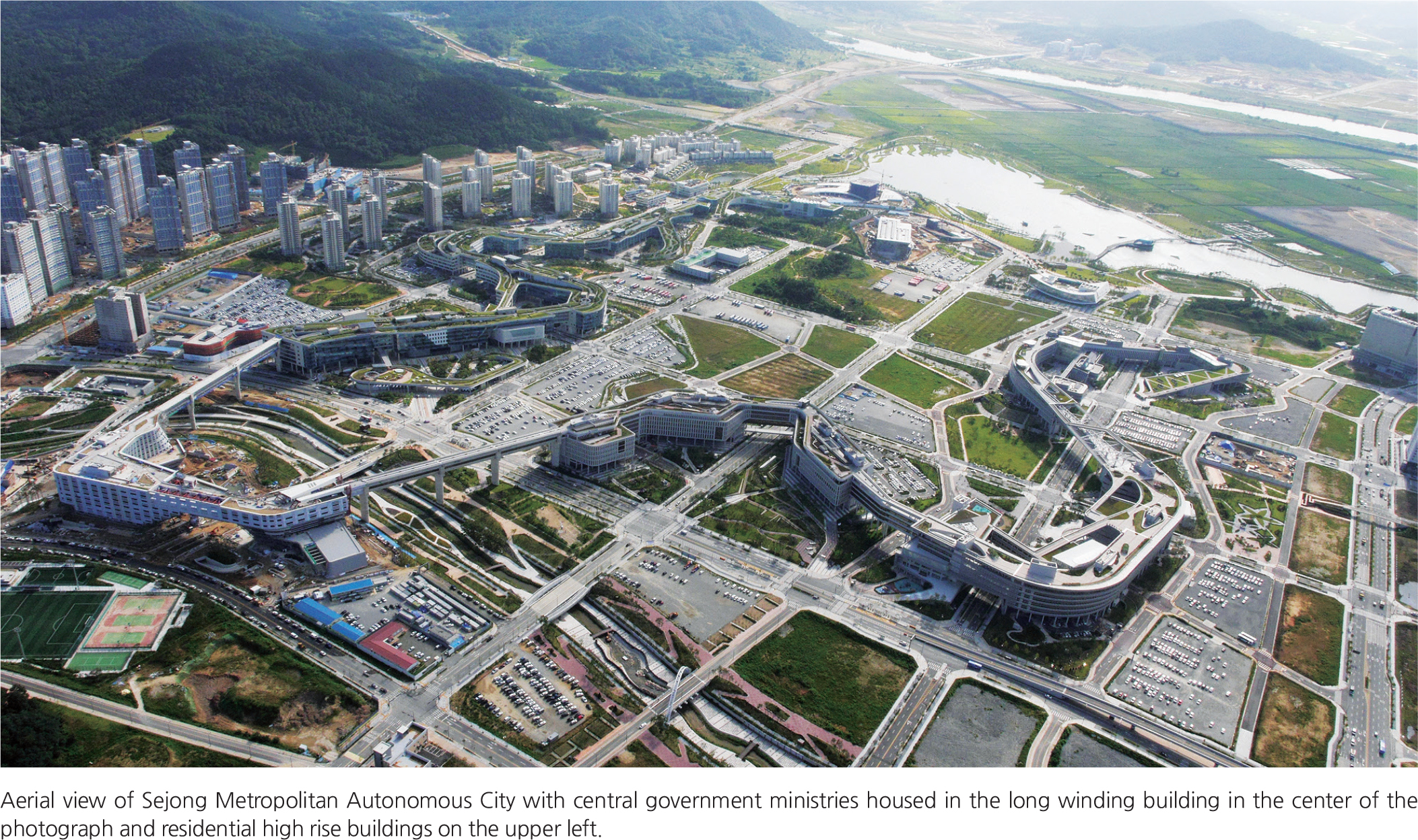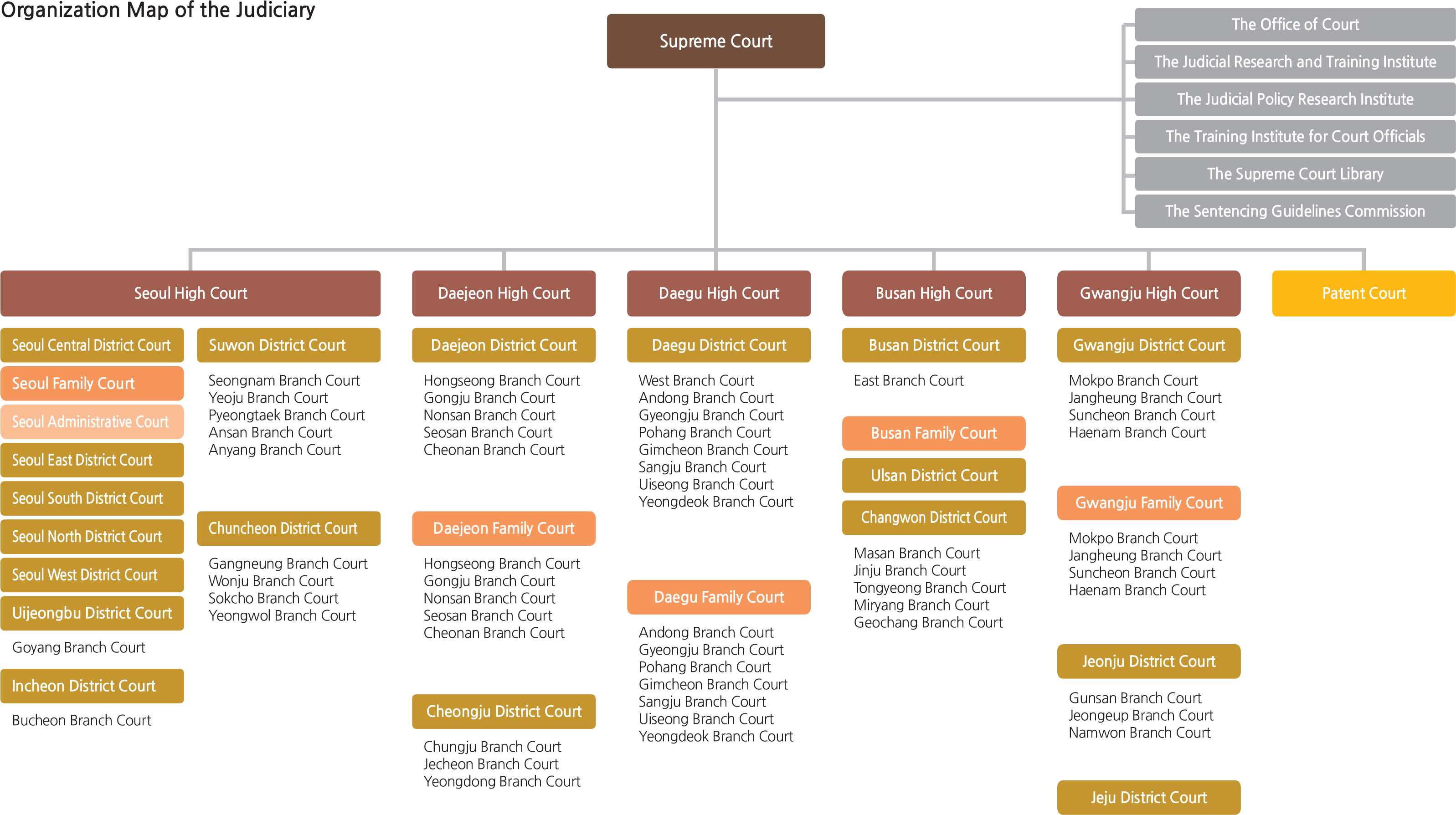The National Assembly
Transforming a nation also means making improvements in the structure of the government. Although the Republic of Korea has gone through six different republics in the national transformation since the Korean War, it has now been stabilized. Korea held the first free election in 1987. The sixth (and current) republic is a democracy that has universal suffrage at age 19. Similar to the United States, the government is divided into three branches: the National Assembly (legislative branch), the Executive Branch, and the Judicial Branch.
The National Assembly is the legislative body of the Republic of Korea composed of members who are elected by the people to whom sovereignty belongs and, on their behalf, enact laws which are the foundation of state operation. They also deliberate and finalize the budget, and make important policy decisions.
The National Assembly has the legislative power to propose and pass constitutional amendments and to enact and revise laws. It deliberates and decides upon budget proposals and settlement of accounts submitted by the government, controls state affairs by auditing the overall administration of the state and inspecting specific issues. Furthermore, it has the right to approve the President’'s
appointment of key public officials, such as Chief Justice of the Supreme Court, President of the Constitutional Court, Prime Minister, and Chairman of the Board of Audit and Inspection, and the right of consent to the conclusion and ratification of major international treaties on behalf of the people. Additionally, the National Assembly actively engages in parliamentary diplomacy which helps elevate national interests as well as the international profile of South Korea.
The statutory members of the National Assembly total 300, among whom 246 members are elected from singlemember constituencies. The remaining 54 gain office through a proportional representation system, which elects the members based on the proportion of votes per political party. The term of National Assembly members is four years. The cycle of the 19th National Assembly ran from May 30, 2012 to May 29, 2016.
The National Assembly has one Speaker and two Deputy Speakers. They are elected at the plenary session through secret voting and each serves a two year term. As the leader of the legislative body, the Speaker represents the National Assembly, presides over the plenary sessions and oversees the administration of the National Assembly. To maintain impartiality in proceedings, the Speaker is not allowed to affiliate with any political party during his or her term of office. In case the Speaker is unable to carry out the required duties within his or her term, a Deputy Speaker is charged with the duty to act in place of the Speaker.
The National Assembly holds regular and extraordinary sessions. The regular session convenes on the first day of September every year and may not exceed one hundred days. Extraordinary sessions convene on the first day of February, April and June (even-numbered months with the exception of August, October and December) every year and may not exceed thirty days.
The National Assembly Secretariat, National Assembly Library, National Assembly Budget Office (NABO), National Assembly Research Service (NARS) and support staff for representatives are components of the legislative support organizations that professionally and effectively support the authority and function of the National Assembly. The function of the Secretariat is to support overall parliamentary activities of lawmakers and take care of the administrative work of the National Assembly. These activities include: supporting the smooth running of meetings; assisting the deliberation on legislative bills, budget and settlement of accounts; the inspection and investigation of state administration; providing support for parliamentary diplomacy; handling civil complaints; and promoting National Assembly Broadcasting Station (NATV) services and the National Assembly as a whole. The Secretariat supports major legislative and parliamentary activities.
The National Assembly Library was established to facilitate legislative activities of lawmakers by collecting, managing and providing necessary information regarding various pending issues and legislation. It is open to the general public even at nighttime and on Sundays with an access to the materials collected.
The National Assembly Budget Office (NABO) is a legislative support body specializing in financial matters. It was established to promote parliamentary financial activities including assistance in deliberating on the budget and settlement of accounts, based on professional and impartial research and analyses.
The National Assembly Research Service (NARS) is an independent legislative and policy research institute established within the National Assembly to strengthen capacity in legislation and policy development. It conducts studies, research and analyses on legislative and policy collects, manages and distributes related materials, and undertakes studies and analyses on legislative trends and cases at home and abroad in the respective fields to provide to Assembly Members and Committees. Each member of the Assembly is entitled to have seven advisors to facilitate their parliamentary activities. The scope of work ranges from support for legislative activities in terms of policy formulation to political affairs concerning communication with voters.
Executive Government
In 1948 the Government Organization Act specified that the Korean government should be divided into 11 executive ministries: Home Affairs, Foreign Affairs, Justice, National Defense, Finance, Education, Agriculture and Forestry, Commerce and Industry, Transportation, Social Affairs, and Postal Services. It also called for the formation of four nonexecutive ministries: Government Administration, Government Legislation, Planning, and the Bureau of Public Information, along with the formation of three committees: Inspection, Examination, and General Accounting. Since the time of national inception in 1948, the structure of the Korean government has changed through the subsequent decades.
The election of President Park Geun-hye in 2013 ushered in what was called “A New Era of Hope and Happiness.” During the launch of the Park administration in February 2013, four key policy objectives were announced: Economic Revival (3 strategies, 42 goals), the People’ Happiness (4 strategies, 64 goals), Cultural Enrichment (3 strategies, 10 goals), and the Laying of the Foundation for Peaceful Unification (3 strategies, 13 goals). The Park government also promoted an efficient governmental system which can support what it terms as a “creative economy,” and this served as a guiding theme for economic revival, especially through the convergence of science, information and communications technologies. The Park Era also established that public safety is a matter of the highest priority in domestic affairs. Park Geun-hye was succeeded in May 2017 by President Moon Jae-in. Upon taking office, Moon faced an immediate nuclear war crisis from North Korea.
Judiciary
The judiciary is a governmental body that judges cases according to the law of the nation and includes the Supreme Court and all lower level courts under Supreme Court jurisdiction. The judiciary structure includes the High Courts below the Supreme Court. High Courts all have District Courts, Family Courts, and Branch Courts of the District Courts under the respective judicial circuits. The High Courts and associated courts are distributed locally across the country so that people have convenient access to the courts for the progress of civil, criminal, and family cases. The Patent Court has been established as a special court under the Supreme Court.
The Supreme Court is the highest court in the nation, and Supreme Court Justices hear appeals that will be met with final decisions. As a single-trial court, it mostly handles final appeals cases. As the final jurisdiction, the Supreme Court has exclusive jurisdiction on the cases regarding the decisions of the Marine Accidents Inquiry Agency as well as cases about the validity of presidential and parliamentary elections. The Supreme Court also has jurisdiction regarding whether orders, rulings, or judgments of each court are unconstitutional. Supreme Court decisions are made either by the Supreme Court Justices Council (composed of all Supreme Court Justices), or by the four justices of the Division Court. A quorum of the Supreme Court Justices Council is 2/3 of all Justices including the Chief Justice. A decision is then made by the majority of attendees. In the case of the four-justice Division Court, a unanimous decision is required.
The Supreme Court Justices Council consists of a Chief Justice and 13 other justices. The Chief Justice is appointed by the President and is confirmed by the National Assembly. The term of the Chief Justice is six years, and it cannot be renewed. With the recommendation from a Chief Justice, Supreme Court justices are appointed by the President and are confirmed by the National Assembly. They work for a 6-year term and are allowed to have additional terms. The affiliated organizations under the Supreme Court are the Office of National Court Administration, the Judicial Research and Training Institute, the Judicial Policy Institute, the Training Institute for Court Officials, the Supreme Court Library, and the Sentencing Guidelines Commission.
Analytical Thoughts
How similar is the structure of the South Korean Government to the United States government structure? Can this form of government deliver democracy to the people? Compare and contrast the South Korean government to that of North Korea. The Chief Justice of the Supreme Court of South Korea has a non-renewable term of six years while the Chief Justice of the Supreme Court of the United States is appointed for life; discuss the pros and cons of a limited term versus a life term.
<photograph> Aerial view of Sejong Metropolitan Autonomous City with central government ministries housed in the long winding building in the center of the photograph and residential high rise buildings on the upper left.


